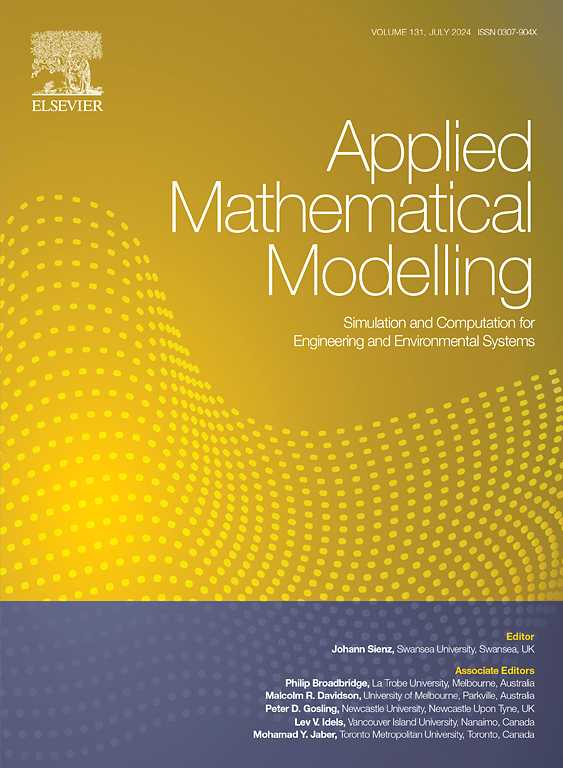Dynamic response of a floating flexible plate to a localised time-periodic and moving load
IF 4.4
2区 工程技术
Q1 ENGINEERING, MULTIDISCIPLINARY
引用次数: 0
Abstract
Flexural-gravity waves generated by a time-periodic and moving external load on a floating flexible plate are studied. The floating flexible plate, similar to an ice sheet, is modelled using the Kelvin-Voigt model. The external load is represented as a localised pressure load. A complex dispersion relation involving the plate viscosity and in-plane compressive force is derived and analysed to obtain the criteria for the occurrence of wave blocking. The study reveals that no real roots of the dispersion relation exist in the presence of viscous damping, and no wave blocking occurs. However, the dispersion relation possesses multiple complex roots with very small imaginary parts for given values of frequency, load speed and compressive force. The viscoelastic plate response is derived using the Fourier transform method, yielding an integral with no singularities in the presence of plate viscosity. Two different mathematical approaches, the principal value theorem and the method of residues, are employed, followed by numerical techniques to analyse the viscoelastic plate response for different parameters. The study demonstrates a damped and non-uniform oscillatory plate response for a range of external load frequencies within the limit of blocking points. Additionally, a significantly higher amplitude in the plate response is observed for low-frequency loads when the load speed exceeds minimum phase velocity.
求助全文
约1分钟内获得全文
求助全文
来源期刊

Applied Mathematical Modelling
数学-工程:综合
CiteScore
9.80
自引率
8.00%
发文量
508
审稿时长
43 days
期刊介绍:
Applied Mathematical Modelling focuses on research related to the mathematical modelling of engineering and environmental processes, manufacturing, and industrial systems. A significant emerging area of research activity involves multiphysics processes, and contributions in this area are particularly encouraged.
This influential publication covers a wide spectrum of subjects including heat transfer, fluid mechanics, CFD, and transport phenomena; solid mechanics and mechanics of metals; electromagnets and MHD; reliability modelling and system optimization; finite volume, finite element, and boundary element procedures; modelling of inventory, industrial, manufacturing and logistics systems for viable decision making; civil engineering systems and structures; mineral and energy resources; relevant software engineering issues associated with CAD and CAE; and materials and metallurgical engineering.
Applied Mathematical Modelling is primarily interested in papers developing increased insights into real-world problems through novel mathematical modelling, novel applications or a combination of these. Papers employing existing numerical techniques must demonstrate sufficient novelty in the solution of practical problems. Papers on fuzzy logic in decision-making or purely financial mathematics are normally not considered. Research on fractional differential equations, bifurcation, and numerical methods needs to include practical examples. Population dynamics must solve realistic scenarios. Papers in the area of logistics and business modelling should demonstrate meaningful managerial insight. Submissions with no real-world application will not be considered.
 求助内容:
求助内容: 应助结果提醒方式:
应助结果提醒方式:


